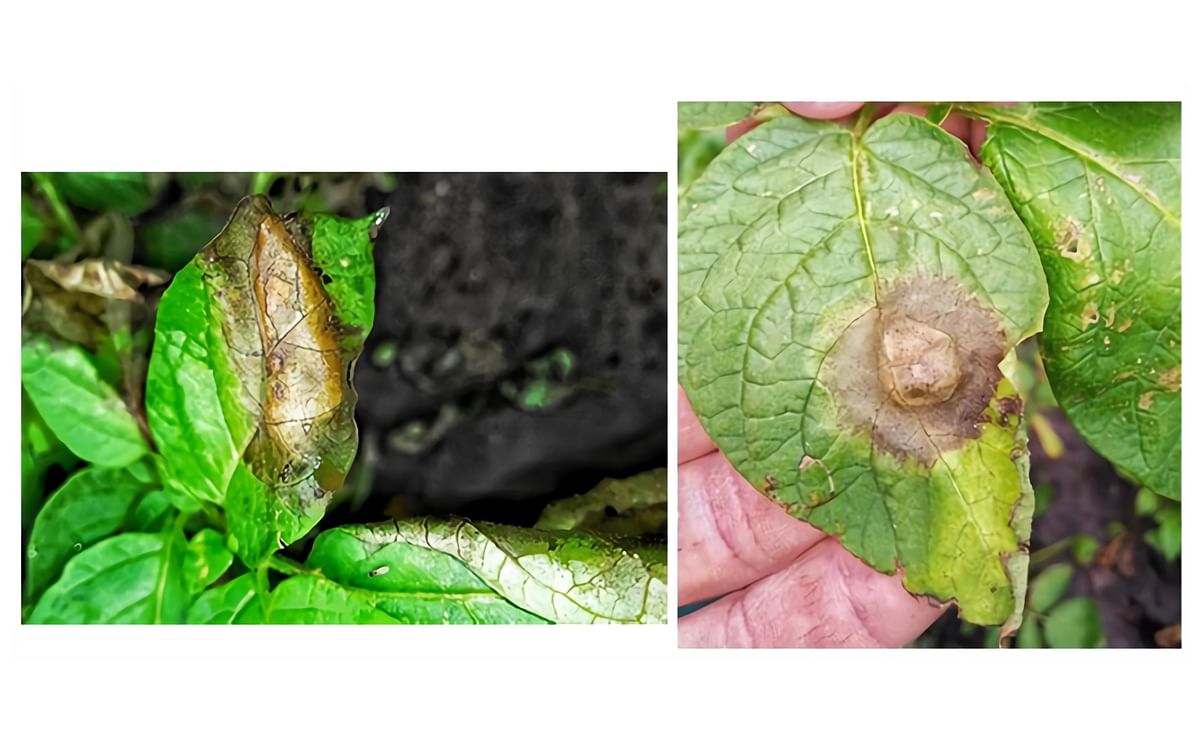The lesions caused by Phytophthora nicotianae look a lot like late blight with disease on foliage
(Courtesy: Dr. Jean Ristaino, NCSU)
Late blight look-alike spotted in potatoes in the Southern United States

Dr. Jean Ristaino, Professor at North Carolina State University with emphasis in research on Phytophthora infestans, provided a report on a late blight look-alike from tomato and potato in North Carolina.
The South-eastern United States have been experiencing very high precipitation levels in the last week of May / first week of June and growers are having “big problems with Phytophthora nicotianae this season in eastern North Carolina on potatoes.
Dr. Ristaino confirmed the presence of the pathogen by PCR and ITS sequencing – and both pathogen mating types have been identified (the pathogen has an A1/A2 mating type structure like that of the late blight pathogen).
University of Wisconsin-Madison point out that the leaf spots and stem symptoms caused by Phytophthora nicotianae very closely resemble those produced by the related pathogen Phytophthora infestans, which causes late blight. These pathogens differ substantially in the quantity of spores (sporangia) they produce, which at least partly accounts for why only late blight is a highly contagious, destructive disease.
P. nicotianae on potato is not new, but is rather sporadic in occurrence on potato. The pathogen can cause both foliar and tuber disease on potato. Foliar symptoms look like late blight, but without the signature white pathogen sporulation; tuber symptoms look like pink rot and result in a softer rot, unlike lesions caused by late blight.








